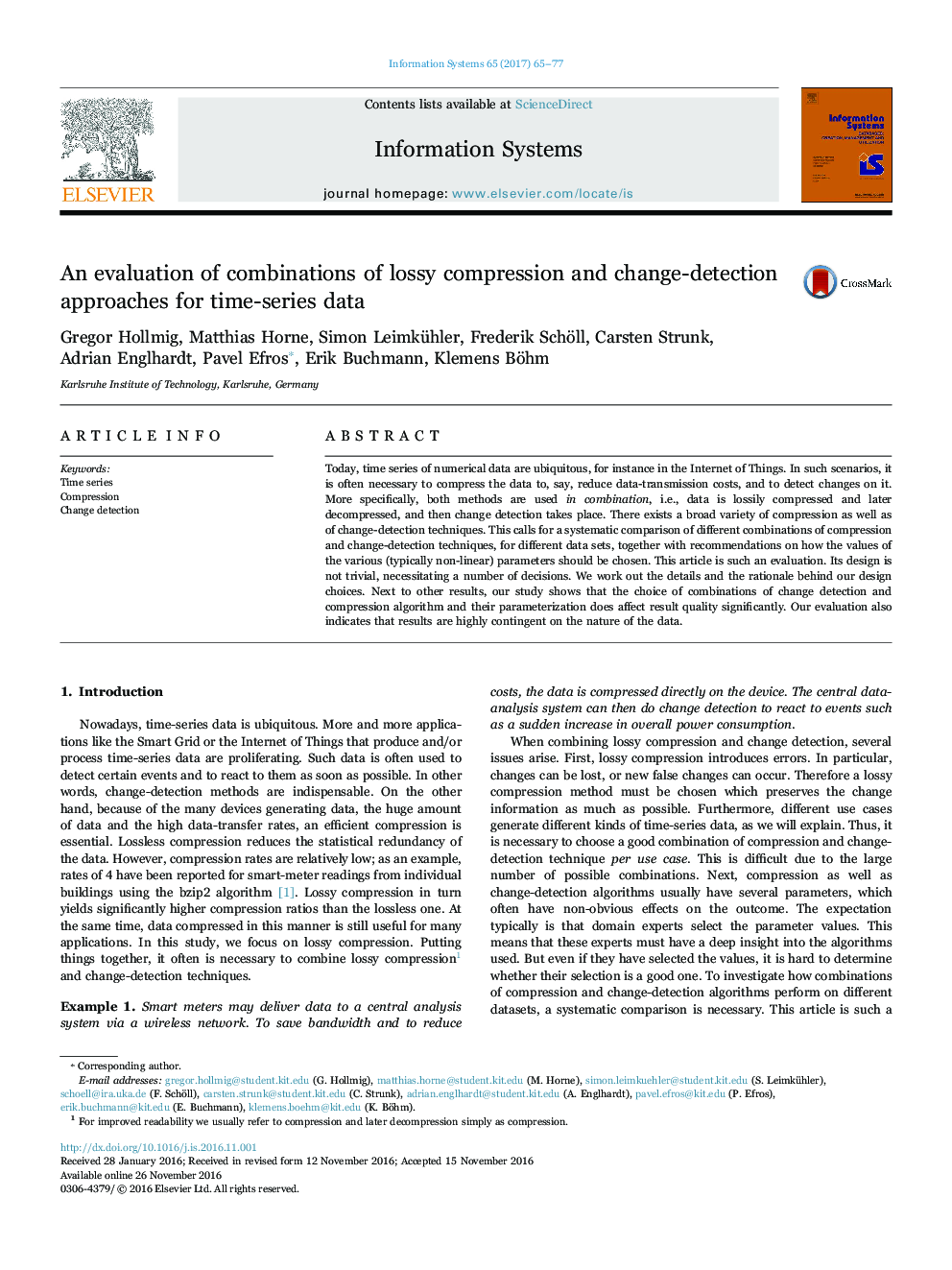| Article ID | Journal | Published Year | Pages | File Type |
|---|---|---|---|---|
| 4945116 | Information Systems | 2017 | 13 Pages |
Abstract
Today, time series of numerical data are ubiquitous, for instance in the Internet of Things. In such scenarios, it is often necessary to compress the data to, say, reduce data-transmission costs, and to detect changes on it. More specifically, both methods are used in combination, i.e., data is lossily compressed and later decompressed, and then change detection takes place. There exists a broad variety of compression as well as of change-detection techniques. This calls for a systematic comparison of different combinations of compression and change-detection techniques, for different data sets, together with recommendations on how the values of the various (typically non-linear) parameters should be chosen. This article is such an evaluation. Its design is not trivial, necessitating a number of decisions. We work out the details and the rationale behind our design choices. Next to other results, our study shows that the choice of combinations of change detection and compression algorithm and their parameterization does affect result quality significantly. Our evaluation also indicates that results are highly contingent on the nature of the data.
Related Topics
Physical Sciences and Engineering
Computer Science
Artificial Intelligence
Authors
Gregor Hollmig, Matthias Horne, Simon Leimkühler, Frederik Schöll, Carsten Strunk, Adrian Englhardt, Pavel Efros, Erik Buchmann, Klemens Böhm,
